Integrating with PingOne
![]()
![]()
![]()
Before starting the integration process, you must have requested, and been approved for, an Onshape Enterprise account or trial, and have an Onshape Enterprise domain name.
An example of an Enterprise domain name might be: MyCompanyName.onshape.com.
Note that you are only able to use one SSO provider at a time.
This configuration process might fail without parameter values customized for your organization. Use your custom SSO identity provider (for example: Okta, PingOne, or ClassLink) dashboard to add Onshape as an application and record the values that are specific for your organization. You need those values for the following procedure.
Onshape signs all outgoing SAML certification requests. You are not required to upload any certificates (for example, a SAML signing certificate), except in the case of ADFS integration because ADFS validates incoming SAML requests. Note that Microsoft also recommends migration from the latest version of ADFS to Microsoft Entra ID. See ADFS Overview for more information.
Typically, an SSO provider is set up for one Enterprise. If setting up a multi-tenant configuration (an SSO provider with multiple Enterprises) using SAML 2.0, the Administrator must use com.onshape.saml2.sp.<domain prefix> as the Onshape Entity ID, and check the Use entityid with company domain prefix box. See the "Configuring the SSO provider in Onshape" section below.
Add Onshape to your PingOne single sign-on account
To enable single sign-on for your company, you must first add the Onshape application to your PingOne single sign-on account:
-
Sign in to the PingOne portal as an Administrator. Click the Connections icon on the left side navigation pane.
-
Click Add Application.
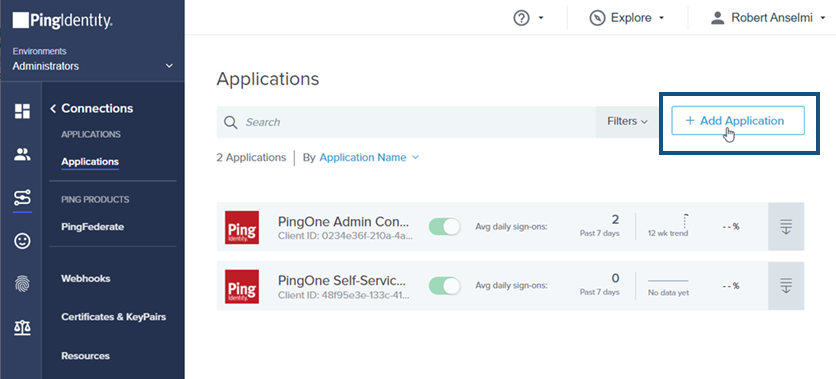
-
Click the Web App box. Then click the Configure button to the right of the SAML connection type.
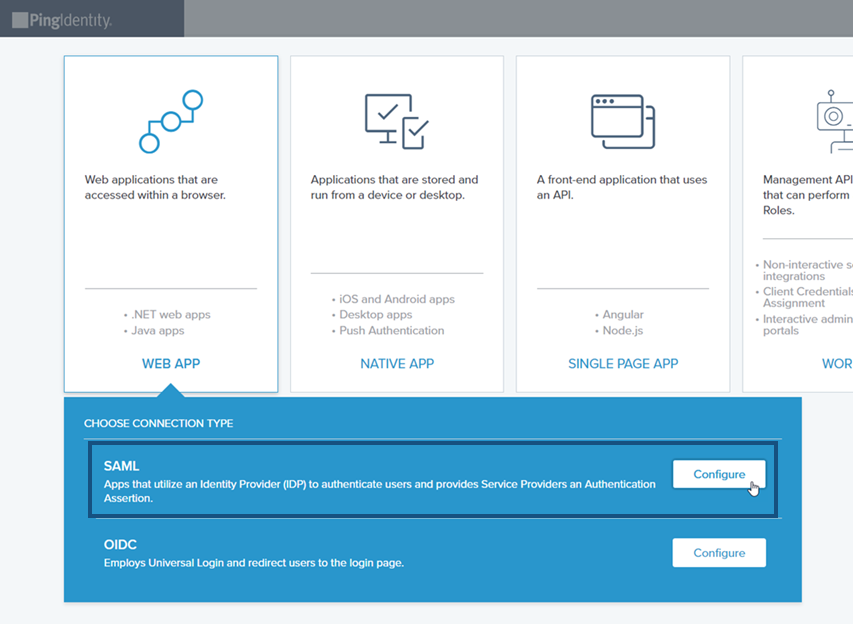
-
In the Create App Profile tab that opens, enter an Application Name and Description. Then click the Next button at the bottom of the pane.
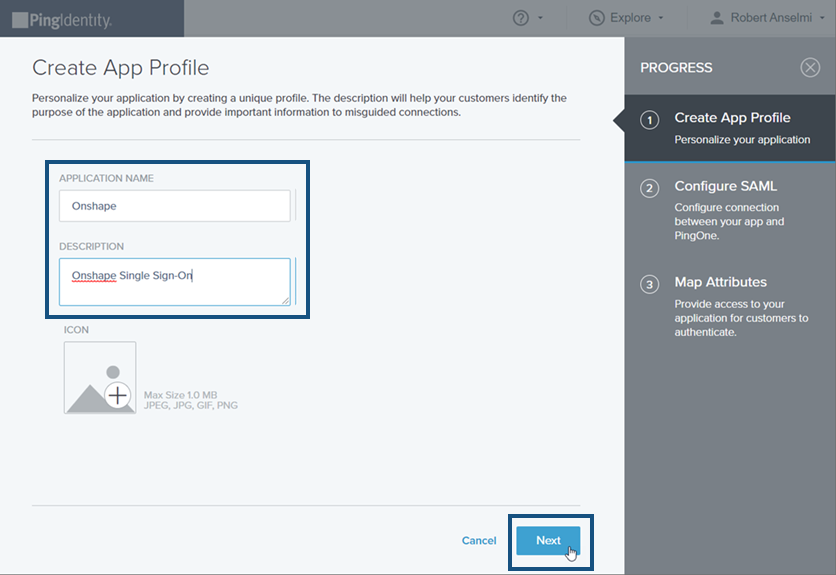
-
In the Configure SAML tab that opens, enter https://cad.onshape.com/identity/saml2/sso in the ACS URL field.
-
In the same tab, scroll down and enter com.onshape.saml2.sp In the Entity ID field, and 300 In the Assertion Validity Duration in Seconds field. Then click the Save and Continue button.
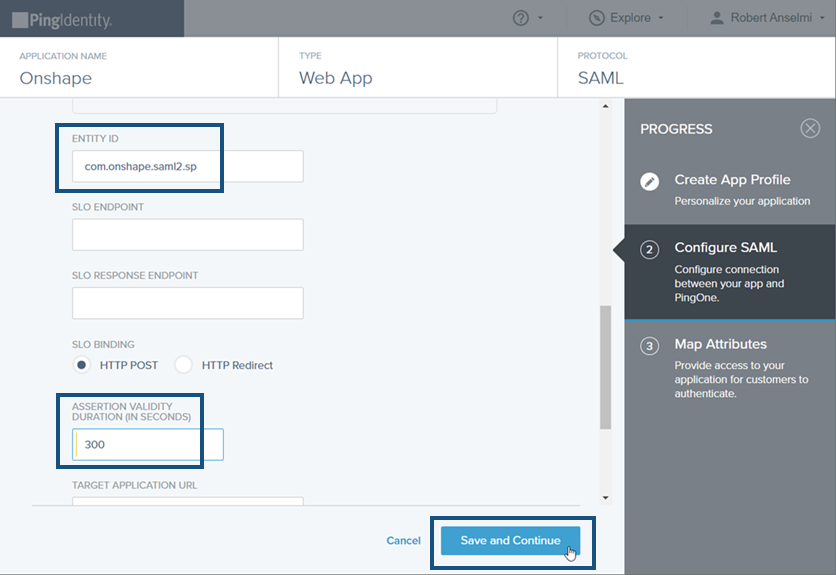
-
In the Map Attributes tab, select Email Address from the PingOne User Attribute drop-down list.
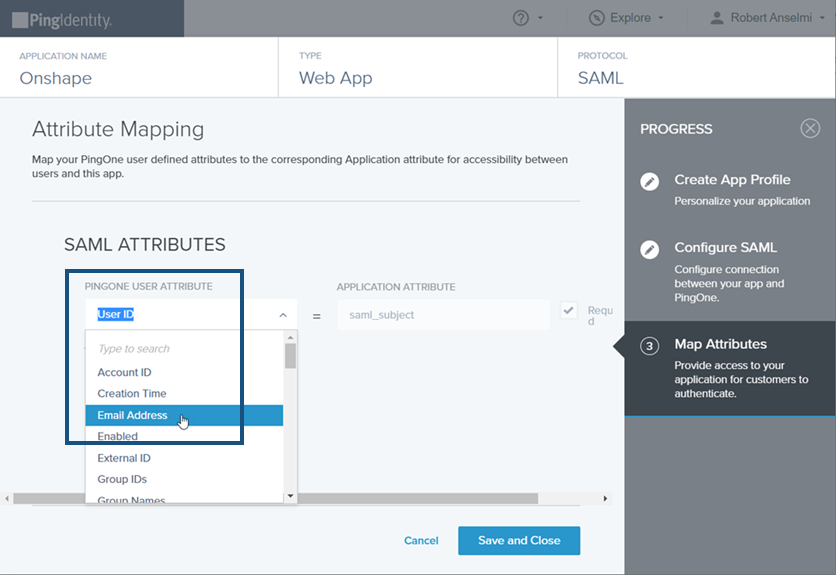
-
In the same tab, create the following three SAML Attributes:
-
Click the Add Attribute link and select Static Attribute from the drop-down list. This creates the first Static Attribute. In the Static Key field, enter firstName, and in the Static Value field enter First Name.
-
Click the Add Attribute link again, and select Static Attribute from the drop-down list. This creates the second Static Attribute. In the Static Key field, enter lastName, and in the Static Value field enter Last Name.
-
Click the Add Attribute link again, and select Static Attribute from the drop-down list. This creates the third Static Attribute. In the Static Key field, enter companyName, and in the Static Value field enter your domain name prefix. For example, if your Onshape enterprise name is Fishbowl.onshape.com, enter Fishbowl into the field.
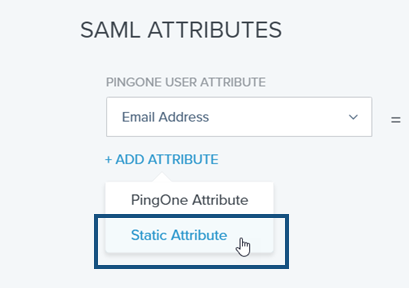
-
-
Once all three SAML Attributes are entered, it should look similar to the image below. Click the Save and Close button.
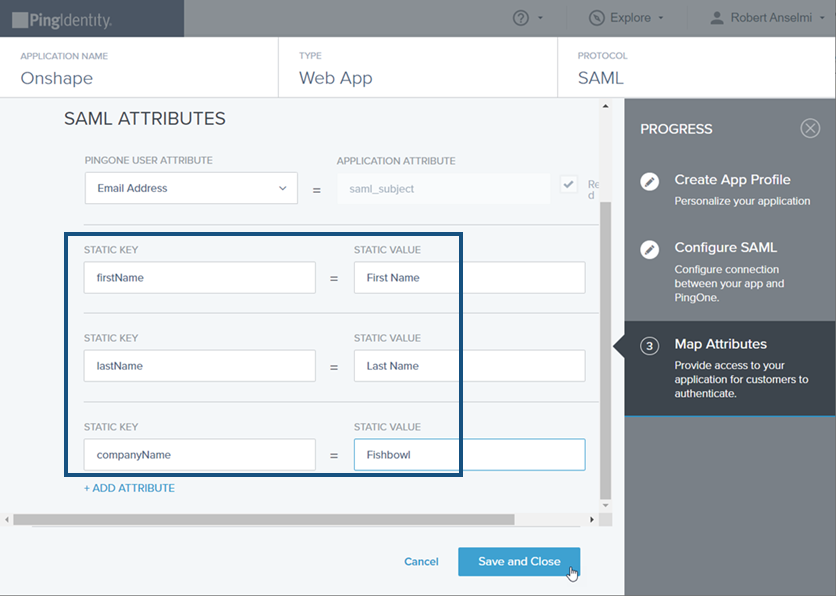
-
The Applications window opens. Click the Avg daily sign-ons switch to enable sign-ons to the application. A notice appears at the top right corner stating that the application is Successfully Saved.
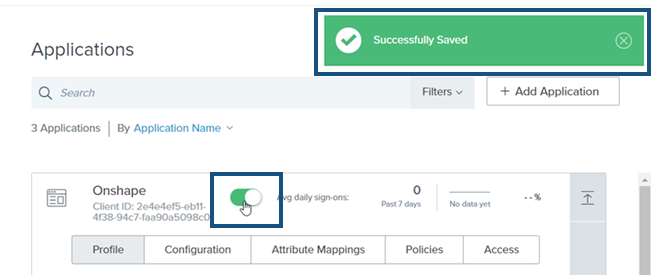
-
Click the Configuration subsection. Then click the Download button to download the metadata file. A message appears in the top right upon successful download of this file. Click X to dismiss the message.
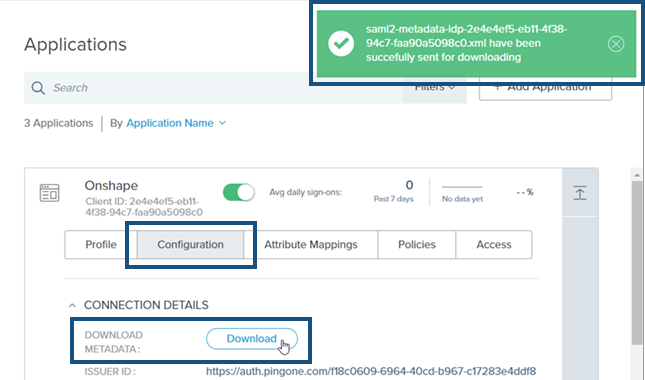

The ACS URL, above, must be "cad.onshape.com" and not the URL of your Onshape enterprise.
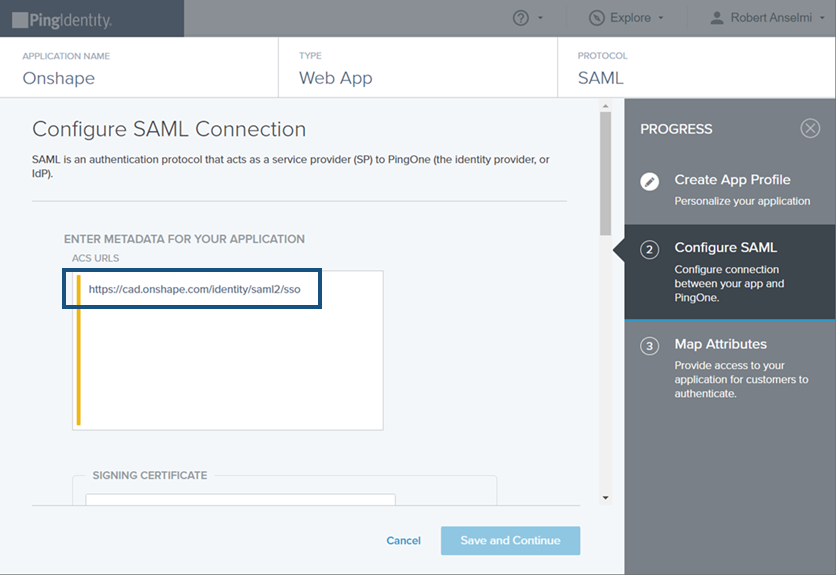
Configure the SSO Provider in Onshape
Once Onshape is configured in the identity provider and you have downloaded the identity provider's metadata file (referred to in Onshape as the configuration file), the SSO provider can be configured in Onshape.
The example images below shows a generic identity provider being configured, but the steps are the same for all identity providers.
- Sign in to your Onshape Enterprise account, using your specialized domain name, as an administrator.
Select
Enterprise settings
from your account:
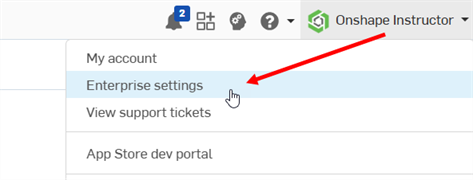
- Select Authentication from the left navigation menu.
-
In the Single sign-on (SSO) subsection, click the Configure SSO provider button:
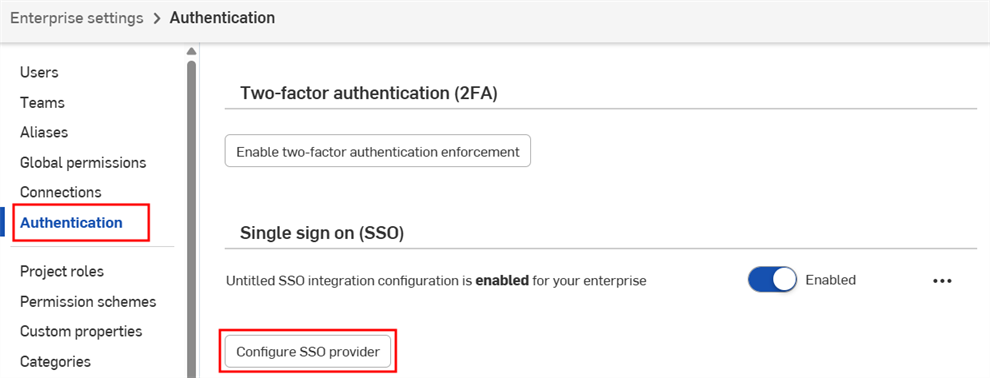
-
The Create SSO provider dialog opens:
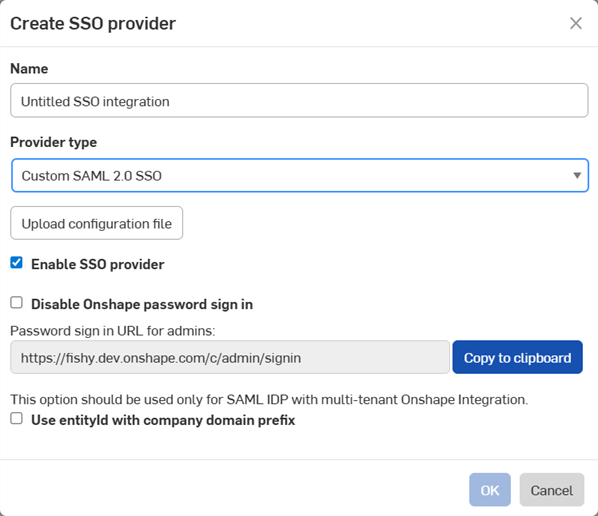
-
In the Name field, enter name, such as Custom SSO
-
In the Provider type dropdown, select your SSO provider from the list.
-
Leave Enable SSO provider checked.
-
Leave Disable Onshape password sign in unchecked for the moment.
-
Check Use entityid with company domain prefix if you have a multi-tenant setup (an SSO provider with multiple Enterprises).
-
Click the Upload configuration file button:
Disable Onshape password sign in disables the typical Onshape password sign in for you and your users. Only the SSO provider sign in prompt is displayed for the Onshape URL. Before checking this option, ensure you can sign in to Onshape yourself (as administrator). You can return here later and enable it once sign in through your SSO provider is verified to work correctly.
Choosing to enforce signing in to Onshape via SSO also results in users not being able to sign in to non-enterprise domains directly, such as cad.onshape.com.
Typically, an SSO provider is set up for one Enterprise. If setting up a multi-tenant configuration (an SSO provider with multiple Enterprises) using SAML 2.0, the Administrator must use com.onshape.saml2.sp.<domain prefix> as the Onshape Entity ID, and check the Use entityid with company domain prefix box.
-
-
Locate and select the metadata configuration file you downloaded previously, and click Open:
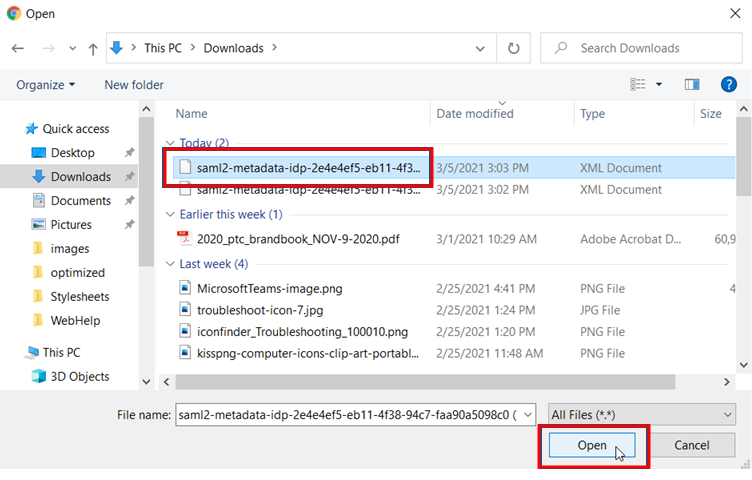
-
Click OK:
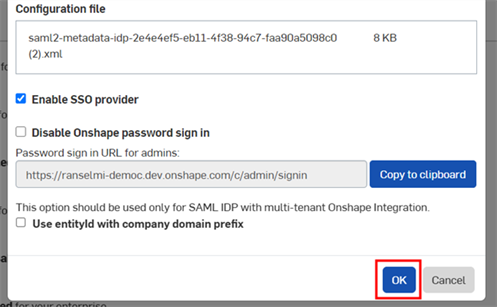
-
The file is uploaded. A notification appears when the upload is completed:
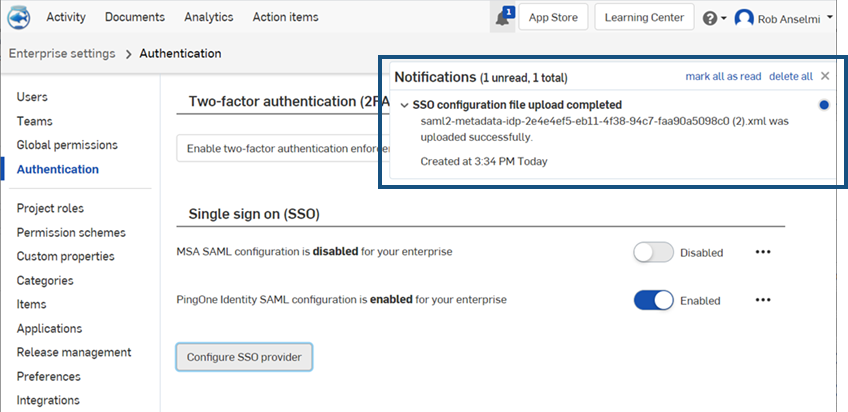
- Sign out of both your Onshape and SSO provider accounts. Be sure to do a hard refresh of both accounts. When you reach the Onshape sign-in page once again, the page has a new
Sign in
link at the bottom, for your SSO provider.
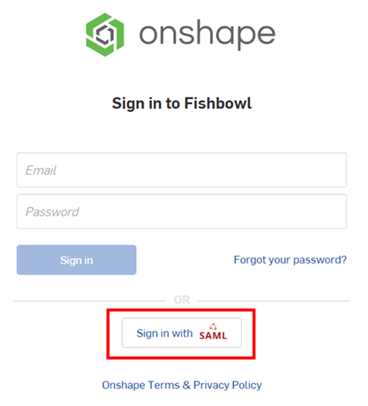
In order to sign in to Onshape, administrators must provision their users (in their single sign on account) to use the Onshape application.